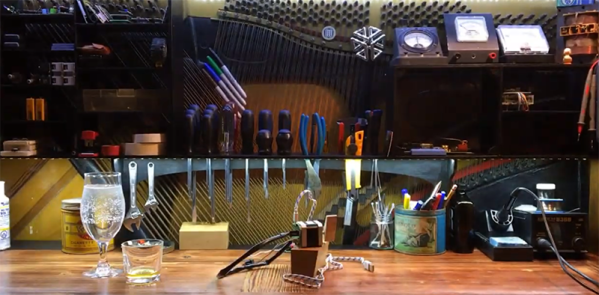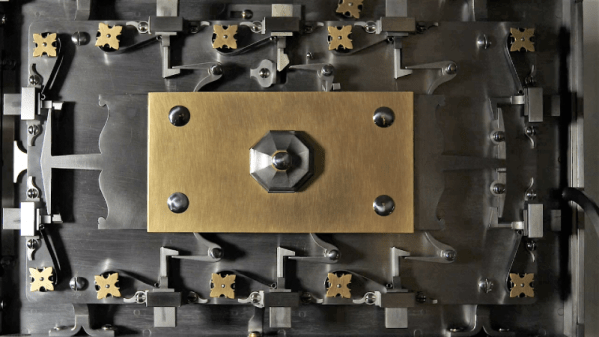Pianos are free, in case you’re not hip to the exciting world of musical instrument salvage. Yes, the home piano, once the pinnacle of upper middle class appreciation of the arts, is no longer. The piano your great aunt bought in 1963 is just taking up space, and it’s not like the guy on Craigslist giving away a free piano has a Bösendorfer.
It’s out of this reality of a surplus of cheap used pianos that [luke] built a new desk. He got it a while ago, but after getting it into his house, he realized it was too old to be tuned anymore. Or at least it was uneconomical to do so. This piano became a workbench, but after a while [luke] wanted something with a little more storage.
The process of converting this piano to a desk began with taking a few photos and putting them into Fusion 360. A series of panels and brackets were modeled in box jointed plywood, and the entire thing was cut out of 6mm Baltic birch plywood at the Vancouver Hack Space.
There are a few nice features that make this desk a little better than an Ikea special. There’s a Raspberry Pi mounted to the shelves, because the Pi still makes a great workbench computer. There’s a power supply, and hookups for 12 V, 5 V, and 3.3 V from an ATX power supply. This is controlled with an awesome antique power switch mounted to the side of the piano. Slap a few coats of black paint on that, and [luke] has an awesome, functional workbench that also has out-of-tune sympathetic strings. Not bad.
You can check out the entire build video below. Thanks [Jarrett] for sending this one in.
Continue reading “Recycled Piano Becomes Upcycled Workbench”


















